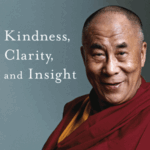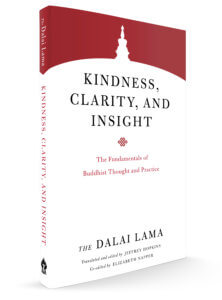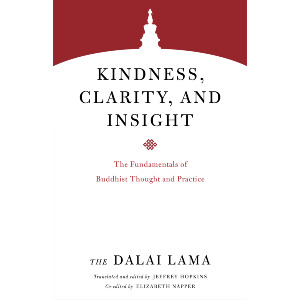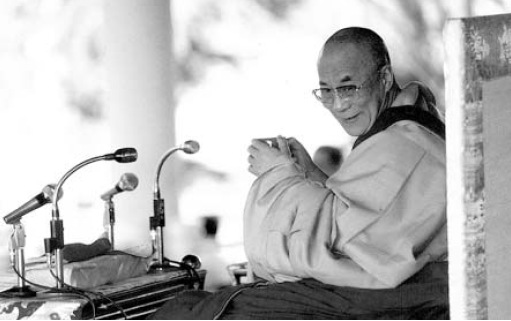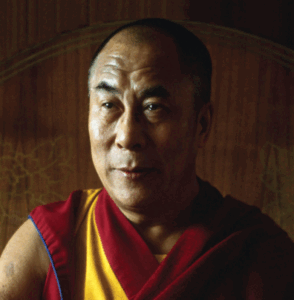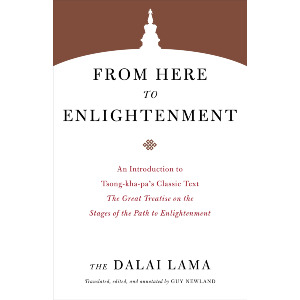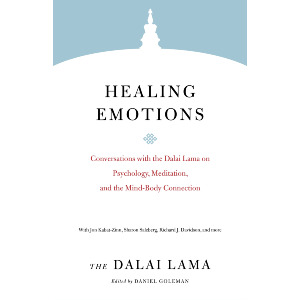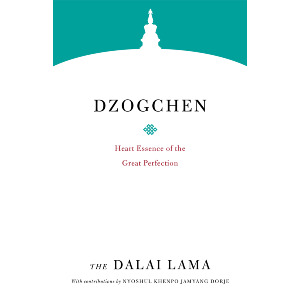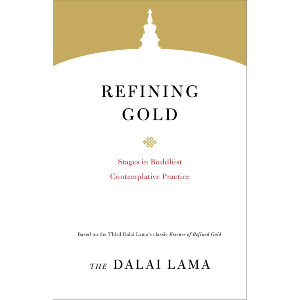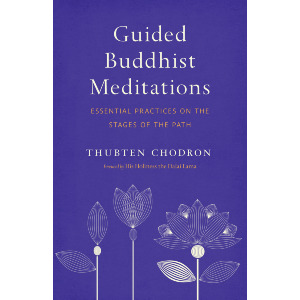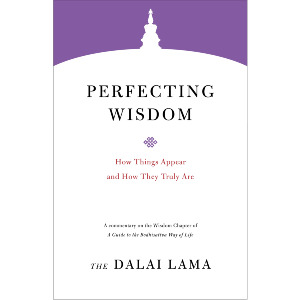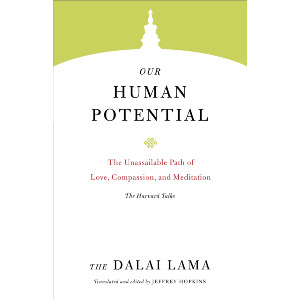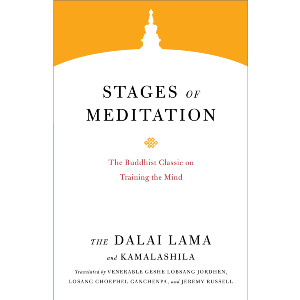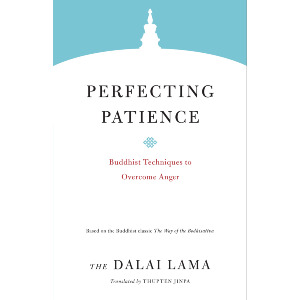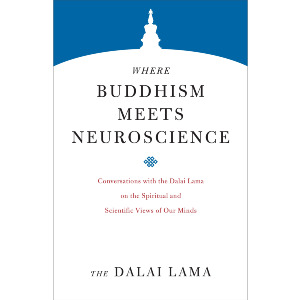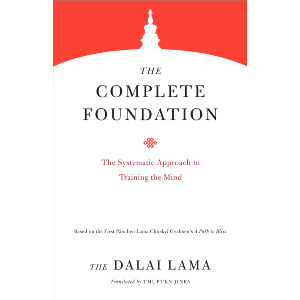Meditation
The tenets of philosophical systems are to be practiced on the basis of a disciplined mental continuum; therefore, meditation is most important both in general and especially in the beginning. Perhaps today as I explain this topic, we could engage in an experiment. Would you like to participate? First, look to your posture: arrange your legs in the most comfortable position; set the backbone as straight as an arrow. Place your hands in the position of meditative equipoise, four finger widths below the navel, with the left hand on the bottom, right hand on top, and your thumbs touching to form a triangle. This placement of the hands has connection with the place inside the body where inner heat is generated.
Bending the neck down slightly, allow the mouth and teeth to be as usual, with the top of the tongue touching the roof of the mouth near the top teeth. Let the eyes gaze downwards loosely—it is not necessary that they be directed to the end of the nose; they can be pointed toward the floor in front of you if this seems more natural. Do not open the eyes too wide nor forcefully close them; leave them open a little. Sometimes they will close of their own accord; that is all right. Even if your eyes are open, when your mental consciousness becomes steady upon its object, these appearances to the eye consciousness will not disturb you.
For those of you who wear eye glasses, have you noticed that when you take off your glasses, because of the unclarity there is less danger from the generation of excitement and more danger of laxity? Do you find that there is a difference between facing and not facing the wall? When you face the wall, you may find that there is less danger of excitement or scattering. These kinds of things can be determined through your own experience.
Within meditations that have an object of observation, there can be two types of objects: external or internal. Now, instead of meditating on the mind itself, let us meditate on an external object of observation. For instance, the body of a Buddha for those who like to look at a Buddha or a cross for those who like that, or whatever symbol is suitable for you. Mentally visualize that the object is about four feet in front of you, at the same height as the eyebrows. The object should be approximately two inches high and emanating light. Try to conceive of it as being heavy, for this will prevent excitement. Its brilliance will prevent laxity. As you concentrate, you must strive for two factors: first, to make the object of observation clear and, second, to make it steady.
Has something appeared to your mind? Are the sense objects in front of your eyes bothering you? If that is the case, it is all right to close them, but with the eyes closed, do you see a reddish appearance? If you see red with the eyes closed or if you are bothered by what you see when your eyes are open, you are too involved with the eye consciousness and thus should try to withdraw attention from the eye consciousness and put it with the mental consciousness.
That which interferes with the steadiness of the object of observation and causes it to fluctuate is excitement or, in a more general way, scattering. To stop that, withdraw your mind more strongly inside so that the intensity of the mode of apprehension begins to lower. To withdraw the mind, it helps to think about something that makes you more sober, a little bit sad. These thoughts can cause your heightened mode of apprehension of the object, the mind’s being too tight, to lower or loosen somewhat whereby you are better able to stay on the object of observation.
It is not sufficient just to have stability. It is necessary also to have clarity. That which prevents clarity is laxity, and what causes laxity is an over-withdrawal, excessive declination, of the mind. First of all, the mind becomes lax; this can lead to lethargy in which, losing the object of observation, as if you have fallen into darkness. This can lead even to sleep. When this occurs, it is necessary to raise or heighten the mode of apprehension. As a technique for that, think on something that you like, something that makes you joyous, or go to a high place or where there is a vast view. This technique causes the deflated mind to heighten in its mode of apprehension.
It is necessary within your own experience to recognize when the mode of apprehension has become too excited or too lax and determine the best practice for lowering or heightening it.
The object of observation that you are visualizing has to be held with mindfulness. Then, along with this, you inspect, as if from a corner, to see whether the object is clear and stable; the faculty that engages in this inspection is called introspection. When powerful steady mindfulness is achieved, introspection is generated, but the uncommon function of introspection is to inspect from time to time to see whether the mind has come under the influence of excitement or laxity. When you develop mindfulness and introspection well, you are able to catch laxity and excitement just before they arise and prevent their arising.
Briefly, that is how to sustain meditation with an external object of observation. Another type of meditation involves looking at the mind itself. Try to leave your mind vividly in a natural state, without thinking of what happened in the past or of what you are planning for the future, without generating any conceptuality...
With consistent practice, consciousness may eventually be perceived or felt as an entity of mere luminosity and knowing, to which anything is capable of appearing and which, when appropriate conditions arise, can be generated in the image of whatsoever object. As long as the mind does not encounter the external circumstance of conceptuality, it will abide empty without anything appearing in it, like clear water. Its very entity is that of mere experience. In realizing this nature of the mind, we have for the first time located the object of observation of this internal type of meditation. The best time for practicing this form of meditation is in the morning, in a quiet place, when the mind is clear and alert.
His Holiness the Fourteenth Dalai Lama is considered the foremost Buddhist leader of our time. The exiled spiritual head of the Tibetan people, he is a Nobel Peace Laureate, a Congressional Gold Medal recipient, and a remarkable teacher and scholar who has authored over one hundred books.

